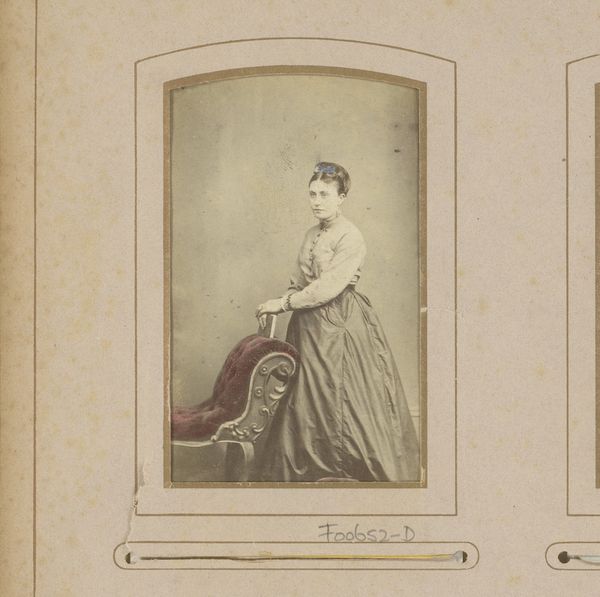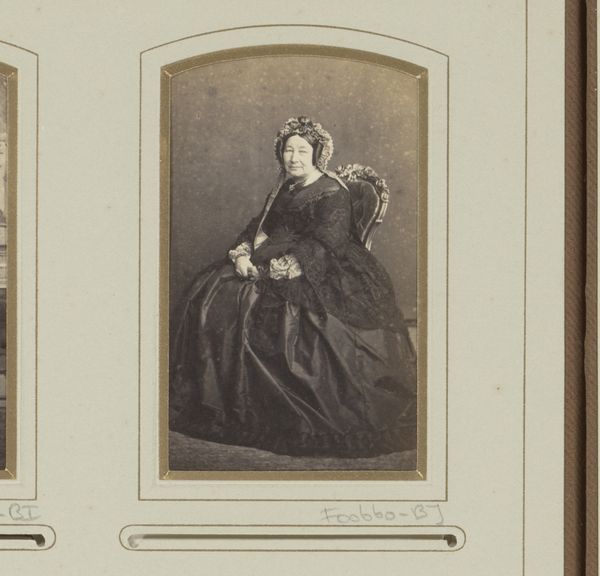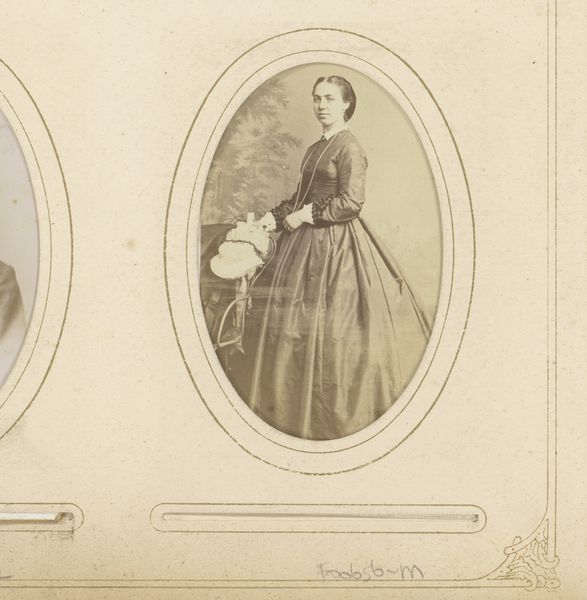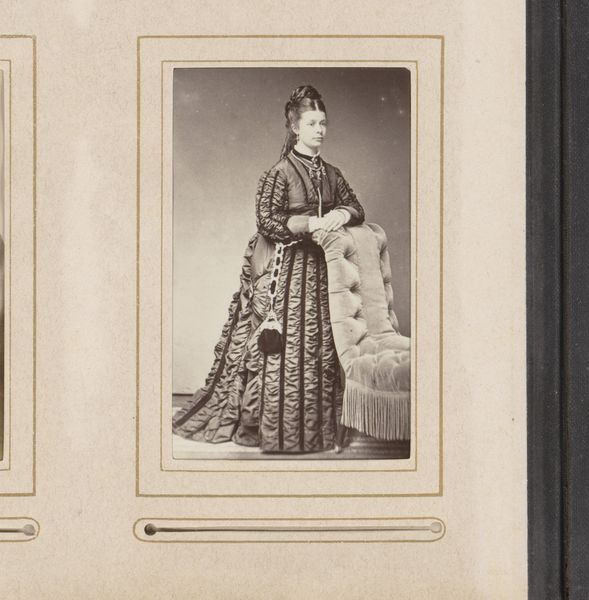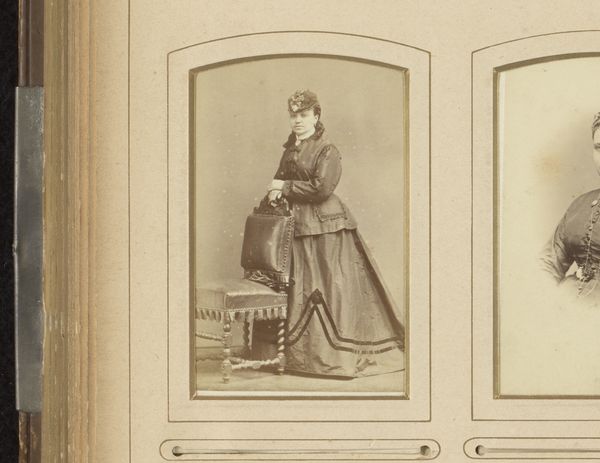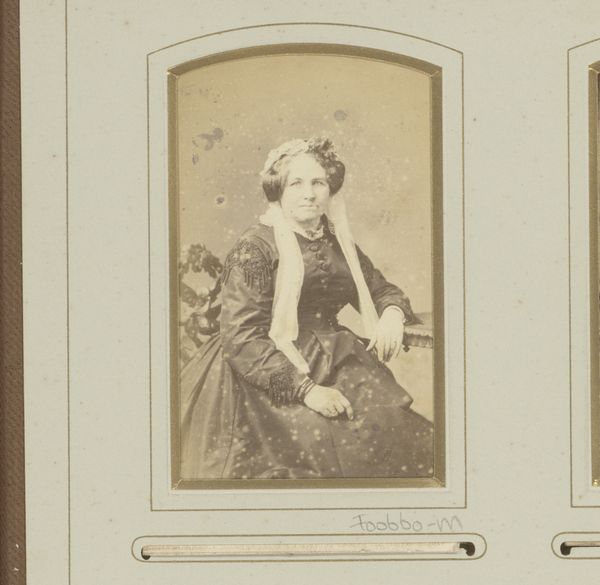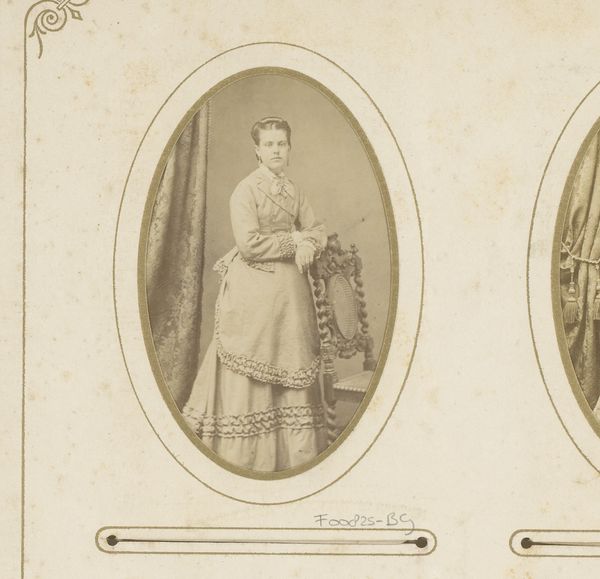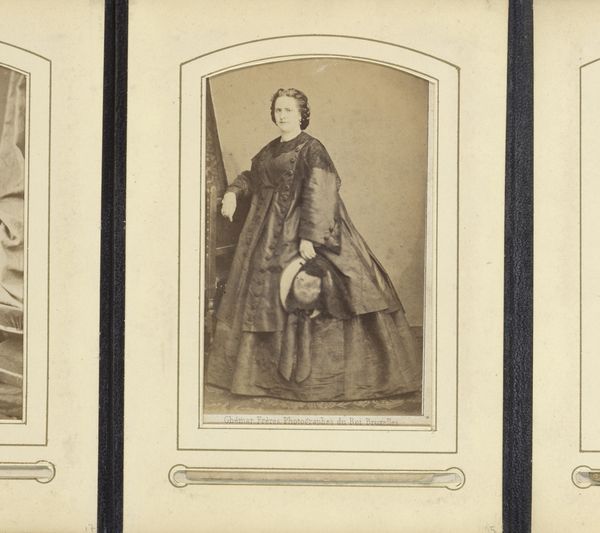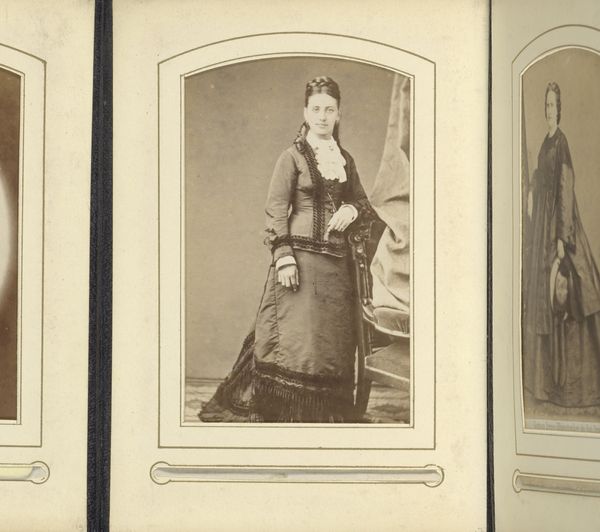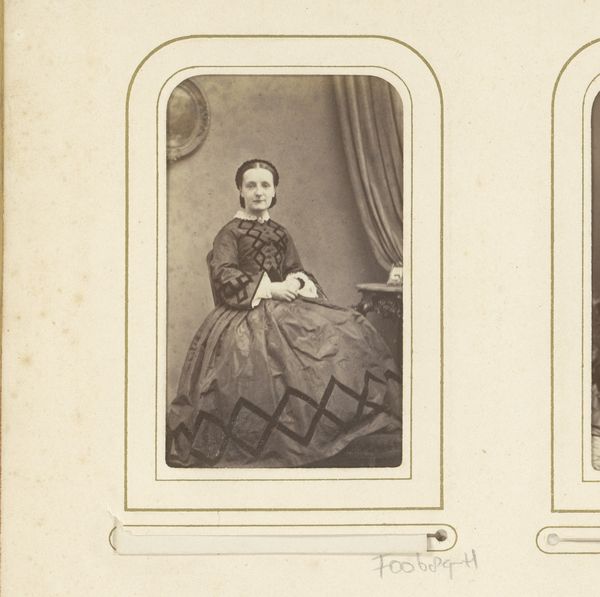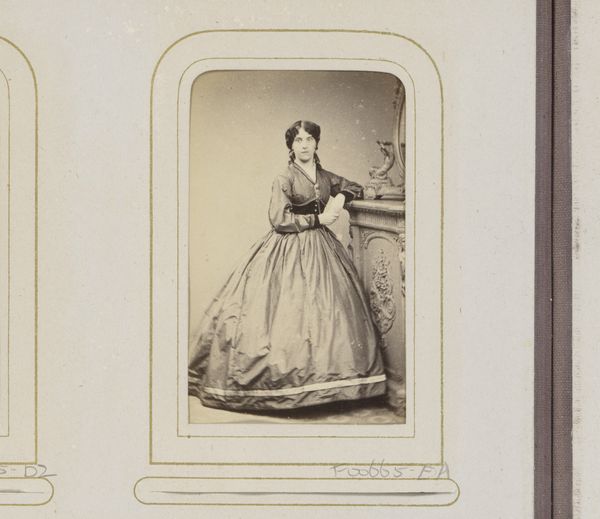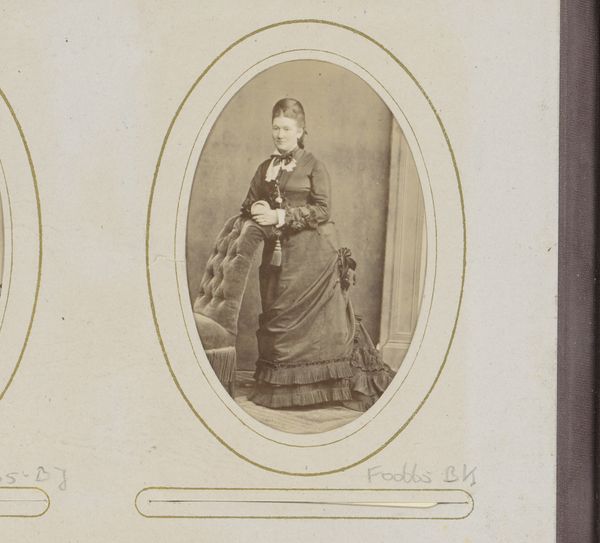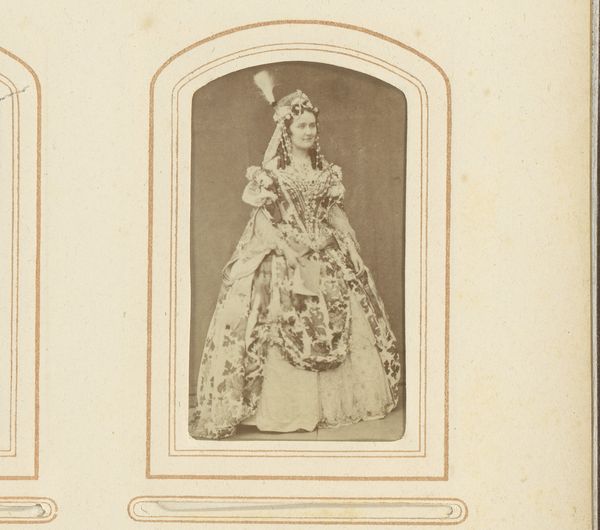
photography
#
portrait
#
photography
#
watercolor
#
realism
Dimensions: height 81 mm, width 49 mm
Copyright: Rijks Museum: Open Domain
Curator: Welcome. We are looking at a work identified as "Portret van een staande vrouw in jurk," dating roughly between 1874 and 1900. It appears to be a photograph, perhaps even touched with watercolor, judging by the soft gradations of light. Editor: The dress! It’s all ruffles and drama. I’m instantly imagining this woman, maybe slightly uncomfortable but playing the part perfectly, like a staged character. There is a little bit of stillness that's kind of melancholic. Curator: Melancholy is a key emotional register during the Victorian era, and portraiture served very specific social functions for wealthy elites at that time. These portraits are performances of status. This portrait demonstrates the ways identity can be communicated through attire, pose, and societal expectations regarding beauty and class. Editor: True. Those ruffled layers are not exactly practical, right? I'll bet you a fancy tea that that dress said more about what the woman's husband or father had, rather than any message of the woman, herself! Her stance and face are almost stern, reserved… a far cry from the flamboyance of her gown. The tiny table and the backdrop feels more like a theatrical stage than home. Curator: Precisely. The backdrop, table, even the flower she's holding become elements contributing to a narrative that intersects gender, class and visual rhetoric of late 19th century. The development of photography was radically transforming what portraiture even *meant.* Access to this technology started creating more opportunities for everyday people. That's significant when discussing social history. Editor: Exactly! Perhaps someday there will be an affordable tech so a digital avatar can strike any desired persona through photographs and videos… Oh, my brain just imagined some horrible dark-mirror dystopia! Curator: Indeed. Considering its historical positioning provides interesting perspectives on present and future portraiture and our perceptions of identity in general. Editor: It definitely makes you wonder about all of the people erased or idealized into these early photographs… I really feel the power of this piece, with its stillness and slight disconnect, speaks volumes. I have a sudden compulsion to visit a haberdasher.
Comments
No comments
Be the first to comment and join the conversation on the ultimate creative platform.

